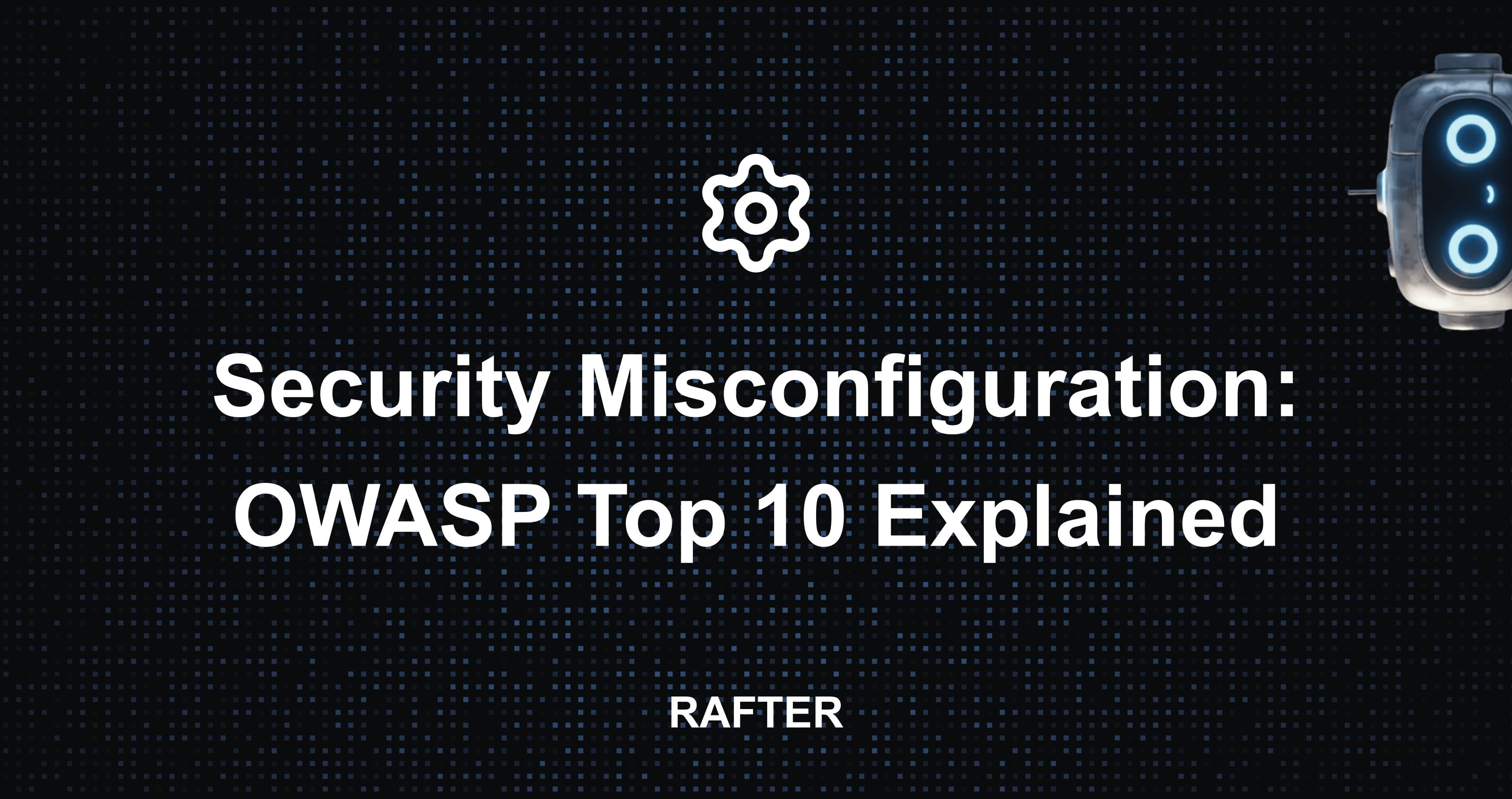
10/4/2025 • 4 min read
Security Misconfiguration: OWASP Top 10 Explained
Estimated reading time: ~8 minutes
The Problem
The biggest breaches often come from the simplest mistake: misconfiguration.
In 2019, Capital One exposed 100+ million customer records due to a misconfigured AWS S3 bucket. No sophisticated attack — just a configuration error. This is why Security Misconfiguration remains a top concern in the OWASP Top 10.
What It Is
Security misconfiguration occurs when security settings are not properly implemented, maintained, or updated. It's often the result of:
- Default configurations left unchanged
- Incomplete security hardening
- Outdated software or configurations
- Human error in configuration management
Common Examples
1. Public AWS S3 Buckets
Problem: Cloud storage buckets configured for public access Impact: Data exposure, compliance violations Example: Capital One (2019) - 100M+ records exposed
Related: This can also lead to SSRF Attacks if the bucket is used to store URLs or configuration data.
2. Default Admin Passwords
Problem: Using default credentials (admin/admin, root/root) Impact: Unauthorized administrative access Example: Many IoT devices and web applications
3. Debug Mode Left Enabled
Problem: Debug/development mode enabled in production Impact: Information disclosure, potential code execution Example: Django DEBUG=True in production
4. Unnecessary Services Running
Problem: Default services enabled that aren't needed Impact: Increased attack surface Example: FTP, Telnet, or other insecure protocols
5. Weak SSL/TLS Configuration
Problem: Outdated or weak encryption settings Impact: Man-in-the-middle attacks Example: SSL 2.0/3.0, weak cipher suites
6. Directory Listing Enabled
Problem: Web servers configured to list directory contents Impact: Information disclosure, file enumeration Example: Apache Options +Indexes
Related: This creates opportunities for Broken Access Control attacks by exposing internal file structures.
7. Verbose Error Messages
Problem: Detailed error messages in production Impact: Information disclosure, system fingerprinting Example: Database connection strings in error logs
Why It Matters
Easy Entry Point for Attackers
- Low Skill Required: Often requires no special tools or knowledge
- High Success Rate: Misconfigurations are common and predictable
- Automated Discovery: Tools can scan for common misconfigurations
- Avoidable: Most issues can be prevented with proper configuration
Business Impact
- Data Breaches: Direct exposure of sensitive information
- Compliance Violations: GDPR, PCI DSS, HIPAA violations
- Reputation Damage: Loss of customer trust
- Financial Losses: Fines, lawsuits, remediation costs
How to Prevent It
1. Harden Configs by Default
# Example: Secure web server configuration
server:
ssl:
protocols: ["TLSv1.2", "TLSv1.3"]
ciphers: "ECDHE+AESGCM:ECDHE+CHACHA20:DHE+AESGCM:DHE+CHACHA20:!aNULL:!MD5:!DSS"
security:
headers:
- "X-Frame-Options: DENY"
- "X-Content-Type-Options: nosniff"
- "X-XSS-Protection: 1; mode=block"
2. Remove Unnecessary Services
- Audit running services regularly
- Disable unused ports and protocols
- Remove default applications and features
- Use minimal installation images
3. Patch and Update Systems Regularly
- Implement automated patch management
- Monitor for security updates
- Test patches in staging before production
- Maintain an asset inventory
4. Use Configuration Management Tools
# Example: Ansible playbook for secure configuration
- name: Secure Apache configuration
lineinfile:
path: /etc/apache2/apache2.conf
regexp: '^ServerTokens'
line: 'ServerTokens Prod'
5. Implement Infrastructure as Code (IaC)
- Version control all configurations
- Automated deployment of secure configurations
- Consistent environments across dev/staging/prod
- Rafter scanning for IaC misconfigurations
6. Regular Security Audits
- Automated configuration scanning
- Manual security reviews
- Penetration testing
- Compliance assessments
7. Principle of Least Privilege
- Minimal necessary permissions
- Regular access reviews
- Separate environments for different purposes
- Use dedicated service accounts
Tools
- Rafter: Scans for IaC misconfigurations and security issues
- Nessus: Vulnerability and configuration scanning
- OpenVAS: Open-source vulnerability scanner
- CIS Benchmarks: Configuration guidelines for various systems
- AWS Config: Cloud configuration monitoring
- Terraform: Infrastructure as Code with security modules
Conclusion
Misconfigurations are low-hanging fruit for attackers. Don't make it easy — implement proper configuration management and regular security audits.
Next Steps:
- Audit your current system configurations
- Implement Infrastructure as Code (IaC)
- Run a Rafter scan to identify configuration issues in your infrastructure